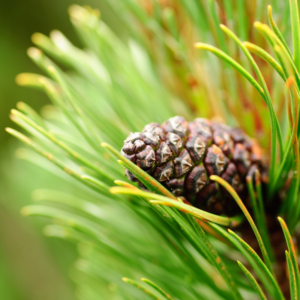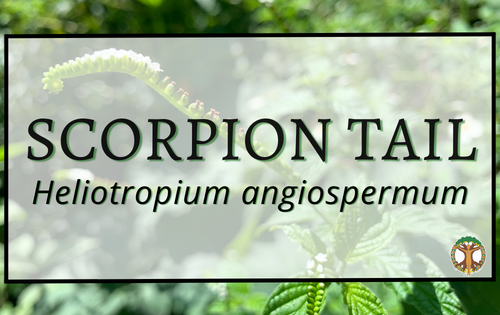
Pine

Common name: Pine
Latin name: Pinus spp. (Pinus elliottii – slash pine, Pinus palustris – longleaf pine, Pinus clausa – sand pine, Pinus echinata – shortleaf pine, Pinus taeda – loblolly pine, Pinus serotina – pond pine, Pinus glabra – spruce pine)
Family: Pinaceae
Usage: The pine tree has long been utilized for its lumber, resins and medicines. The leaves of the pine tree, or needles, can be utilized for their medicinal properties, as well as the resin of the tree. The energetics of pine are warming and drying. The fresh green needles of pine can be made into a tasty infusion that is packed with Vitamin C. The inner bark of pine is utilized to soothe a wet, phlegmy, congested cough and act as an expectorant. The needles can also be utilized in a steam and inhaled. Pine resin is antimicrobial; just like it heals the wounded bark of the tree, it can assist in healing minor cuts and abrasions. The resin and innerbark can be infused into and oil and utilized as a salve. Not only valued by us humans, pines are an important source of food and shelter for wildlife wherever they grow.
Growth/Habitat: Pines are evergreen, coniferous trees. There are approximately 126 species within the Pinus genus, 7 of which grow in Florida. Each of the seven pines that grow throughout Florida thrives in a particular habitat. For example, Longleaf pine can be found mostly in the northern half of Florida, in sandy flatlands. Slash pine is found growing naturally throughout most of Florida, especially in the southern half. Sand pine thrives in coastal dune regions and is a popular choice for Christmas trees. All pines have long, slender leaves known as “needles”. These needles tend to be in groups of two or more and are arranged in a bunch called a fascicle. Pines are gymnosperms, meaning they reproduce with seeds, but do not have flowers or fruit. Pines instead produce seed between male and female cones. Some pines release seed on their own, while some pines require fire to induce the opening of the cone and release of the seeds; this is known as serotiny. One such species is the long leaf pine, Pinus palustris, which before the advent of major fire suppression practices by humans, covered 60 million acres of the southeastern US. (UFIFAS)
Energetics: Cool or warm (Depending on the species) • Moist • Dry
Recipes:
- Infuse fresh pine needles in apple cider vinegar
- Infuse pine needles in carrier oil and use your favorite salve recipe for pine salve
Culinary Use: One of the most popular uses is creating a simple hot water infusion with fresh pine needles.
Other herbs that combine well with pine are:
- Thyme and bee balm for cold prevention
- Cinnamon, cardamom, and ginger help warm the body up in the wintertime and fight off germs
- Peppermint and catnip for daytime support when you’re feeling under the weather
Fresh pine needles can be used to infuse apple cider vinegar for a potent vitamin C-packed balsamic vinegar-like product that many enjoy.
Other Uses:
- Can be used in a steam to loosen phlegm, chest congestion, and coughs
- Resin can help heal minor abrasions and cuts
- Pine needles can be consumed as tea to reduce fevers and soothe coughs and colds
- The needles are a diuretic
- Inner pine bark is more astringent than the needles and contains more resin
- The resin (pitch) is often used in first-aid as an antimicrobial wound dressing, and it can help remove splinters
- Pine resin is antimicrobial, and just as it heals wounds on the bark of the tree, it can also help us heal minor cuts and abrasions
- The resin and inner bark can also be used to infuse oil to make a soothing salve.
Flower Essence: For those who often blame themselves for their mistakes and the mistakes of others, pine flower essence can help break the cycle of self-blame. Individuals who are rarely satisfied with their achievements and always find faults in themselves find relief with pine flower essence. Guilt can create a negative cycle, so introducing this herbal ally as a flower essence can help one reclaim perspective and find more balance in self.
Cautions: A few species of trees have “pine” in their name, but they’re not used in the same way and could even be toxic. Australian pine (Casuarina spp.) and Norfolk Island pine (Araucaria heterophylla) are two such trees. When working with pine, as with any herbal ally, rely on identifiers and scientific names to verify identity.
Do not use pine needles during pregnancy. Avoid using the bark internally long-term. Both the needles and bark can irritate the kidneys, especially with long-term and high-dose usage. Don’t use pine resin internally unless under the direction of a medical or herbal professional in very small doses.
When using the inner bark, avoid girdling the tree.
References:
The Bach Remedies Workbook: A Study Course in the Bach Flower Remedies, by Stefan Ball, (p. 125-126)
Florida’s Edible Wild Plants: A Guide to Collecting and Cooking, by Peggy Sias Lantz, (p. 55-56)
https://www.holisticlivingschool.org/2020/05/23/june-pine/
https://www.holisticlivingschool.org/2014/11/09/materia-medica-pine/
https://edis.ifas.ufl.edu/publication/FR003?downloadOpen=true
https://www.herbalgram.org/resources/herbalgram/issues/65/table-of-contents/article2756/






